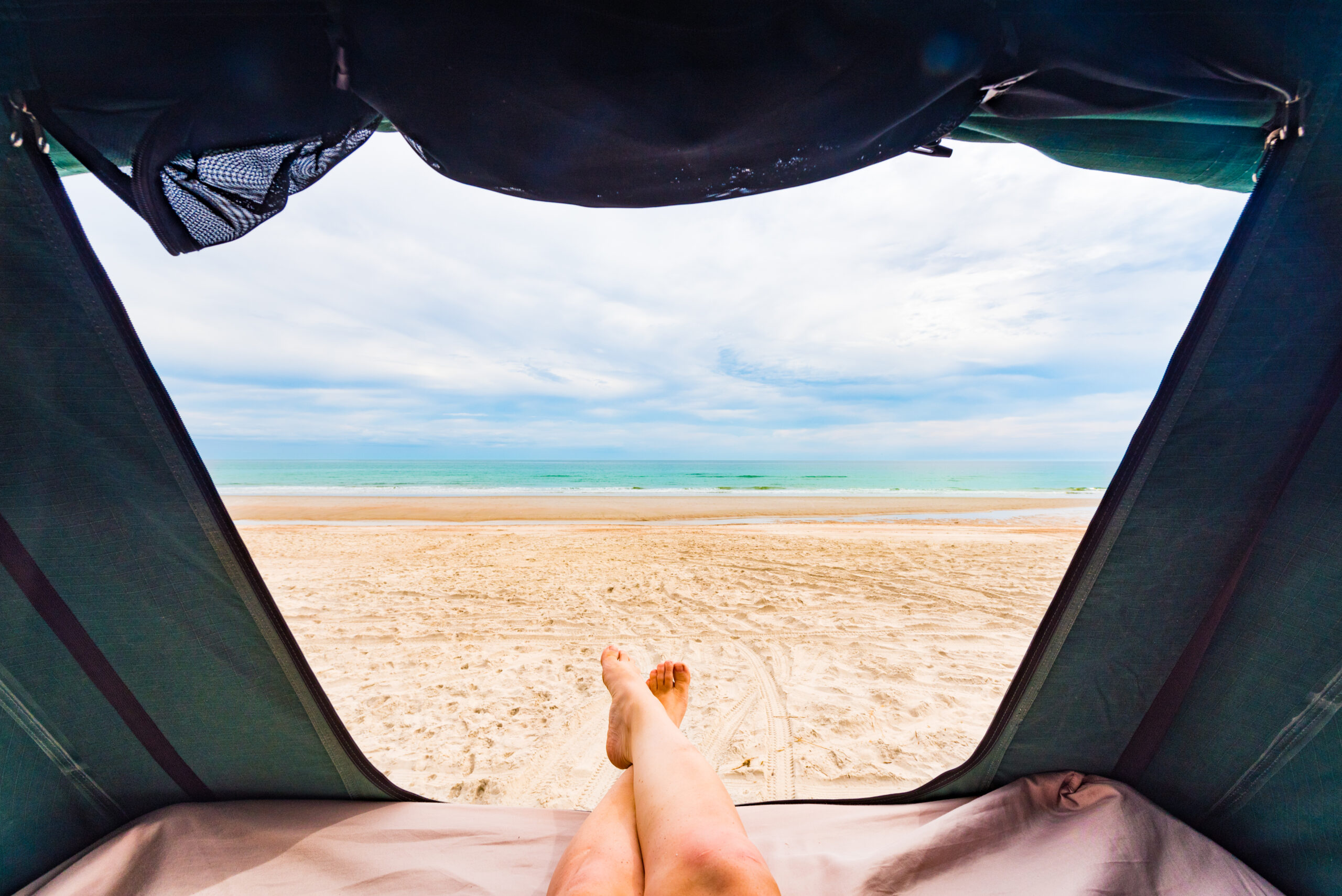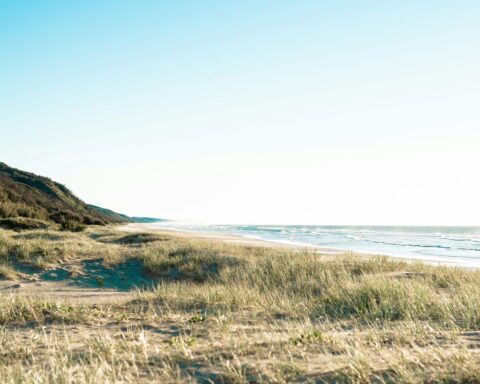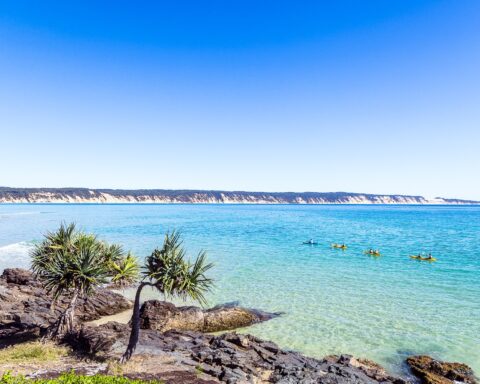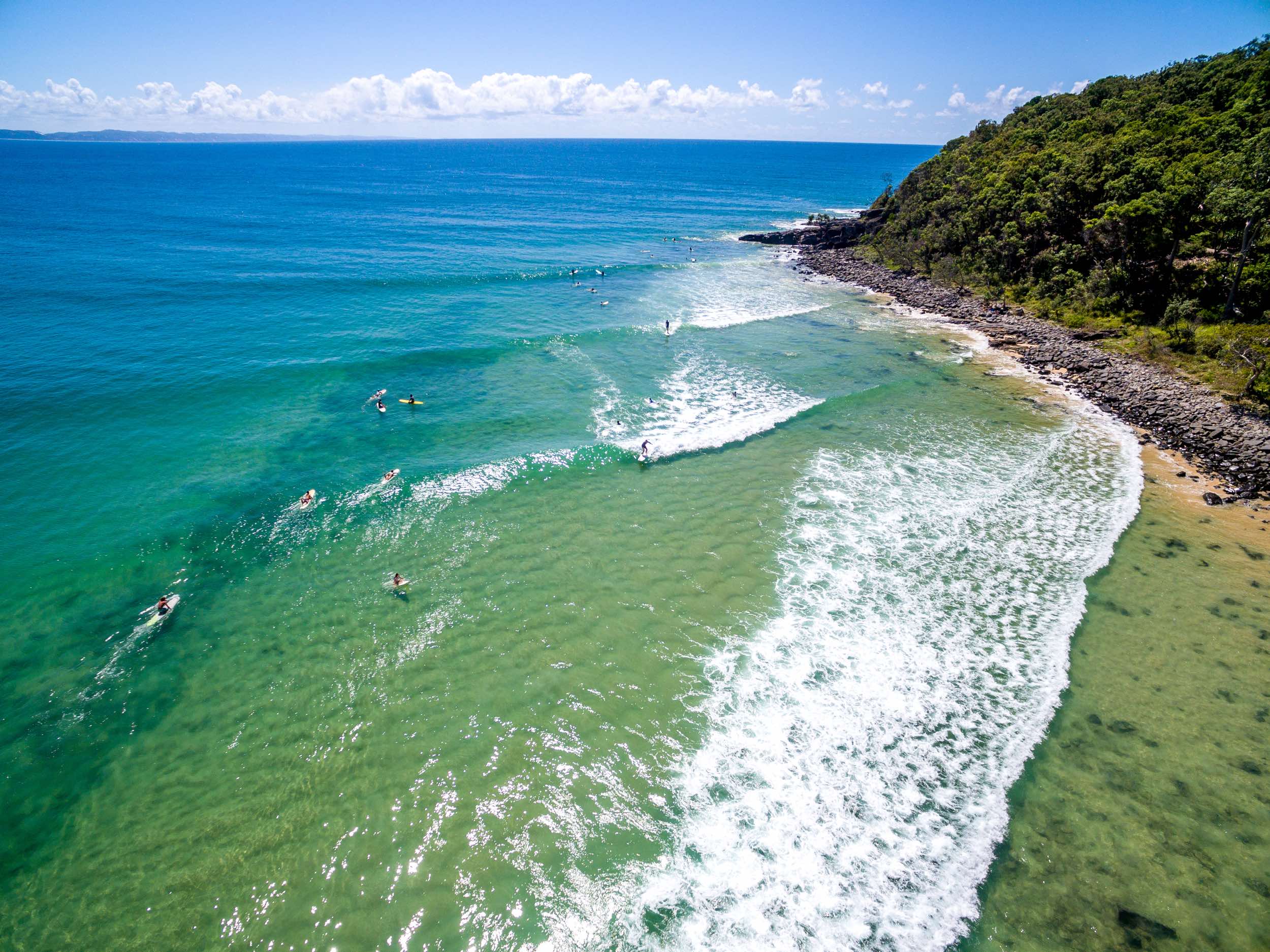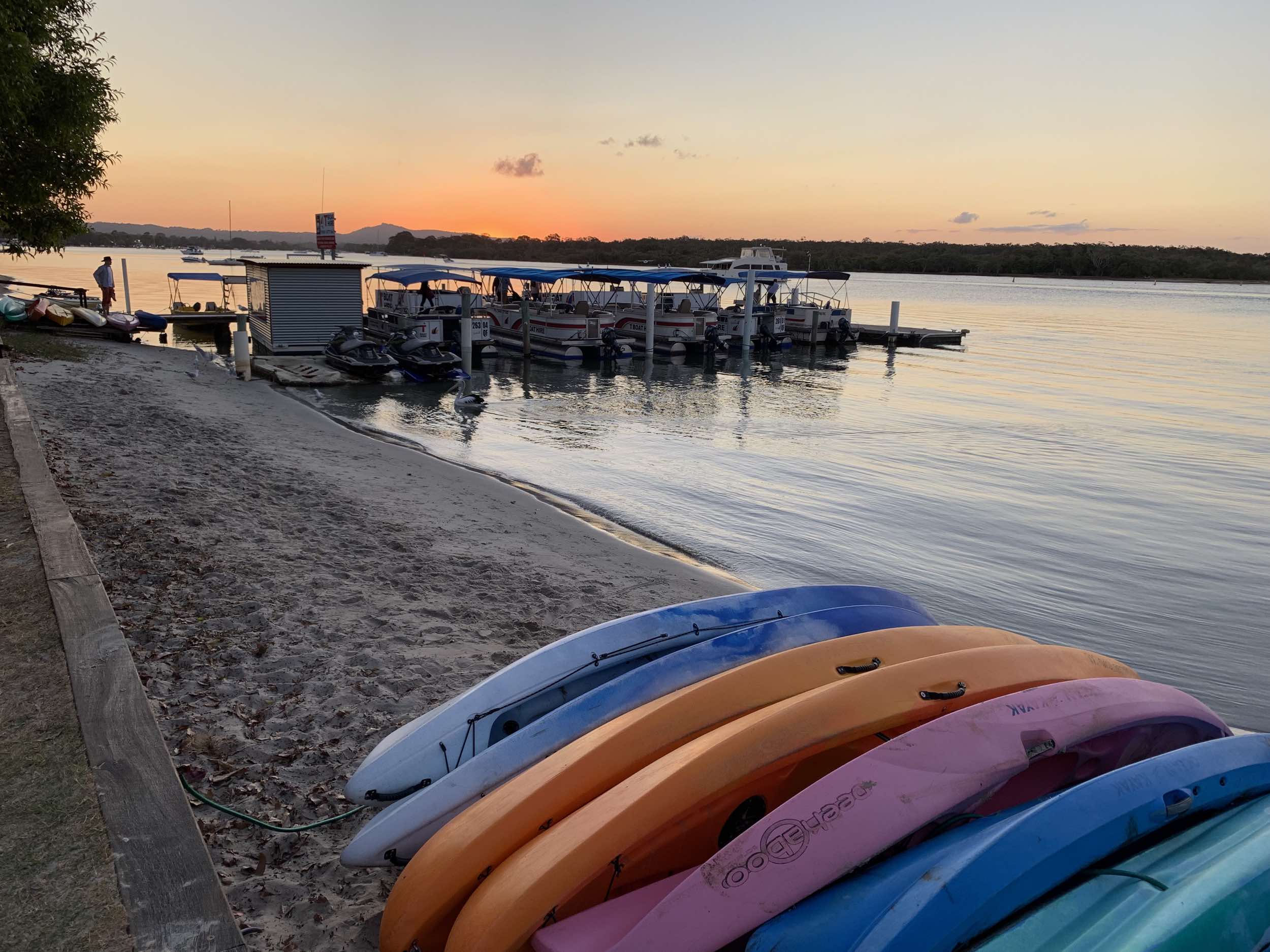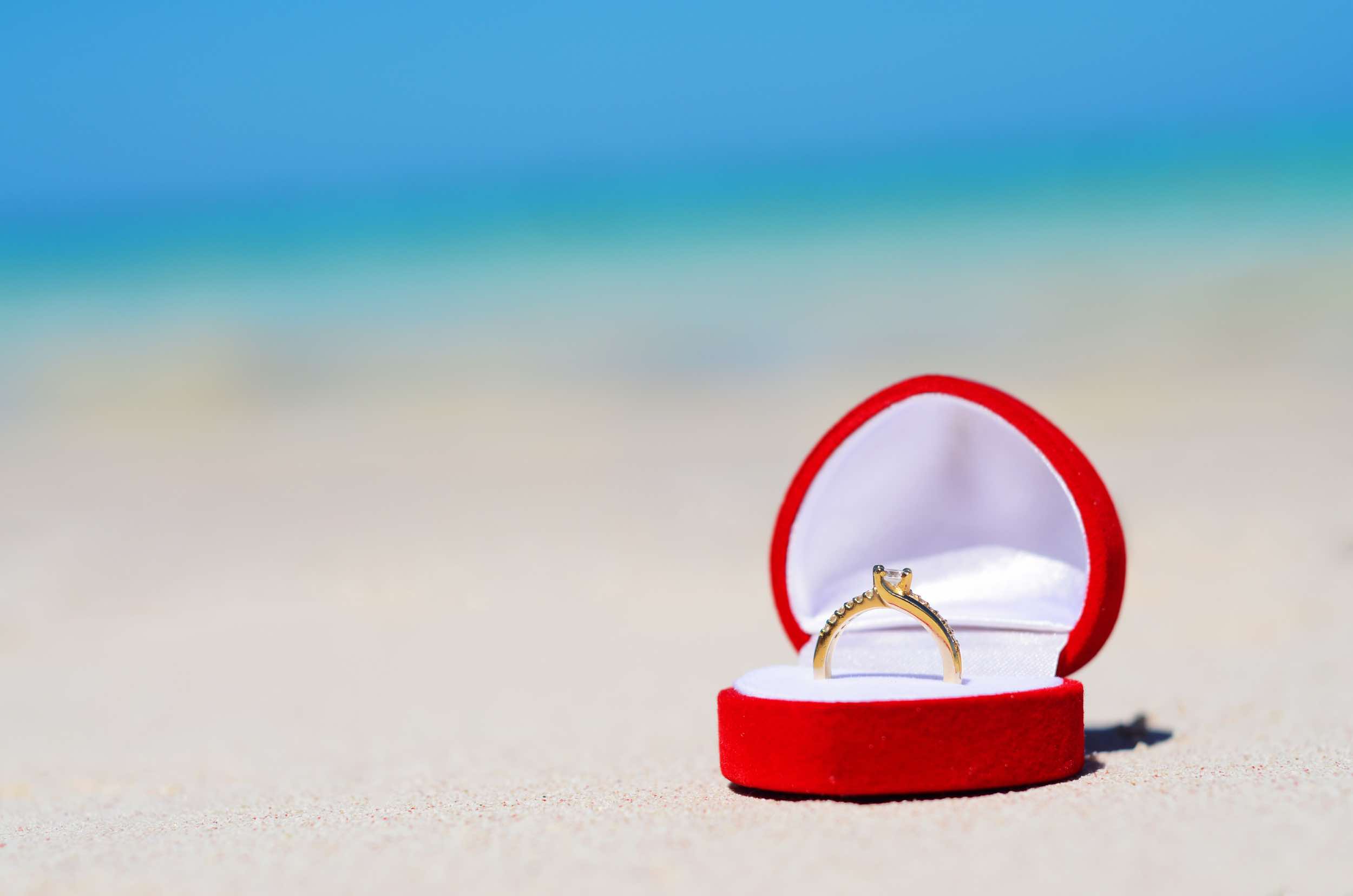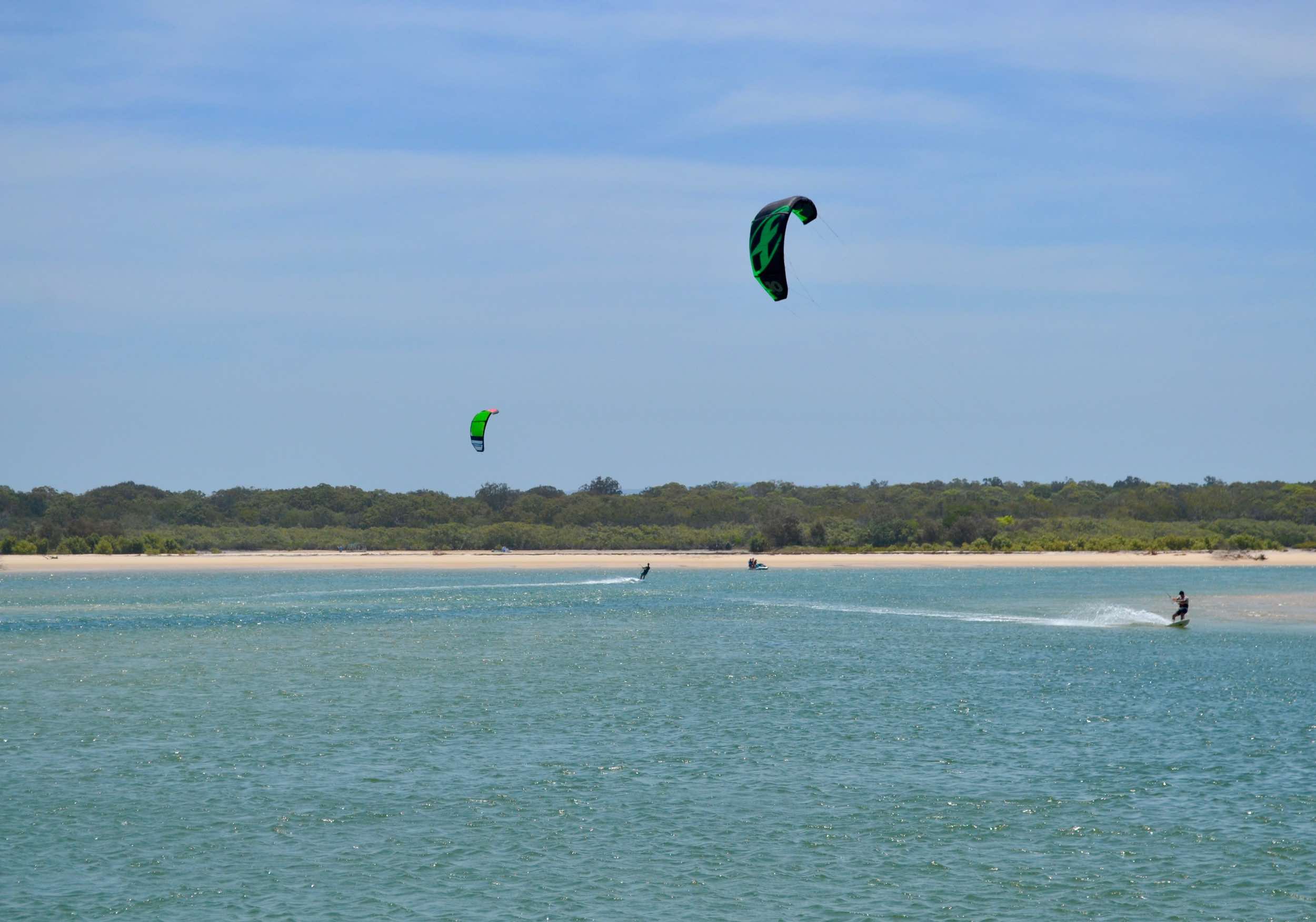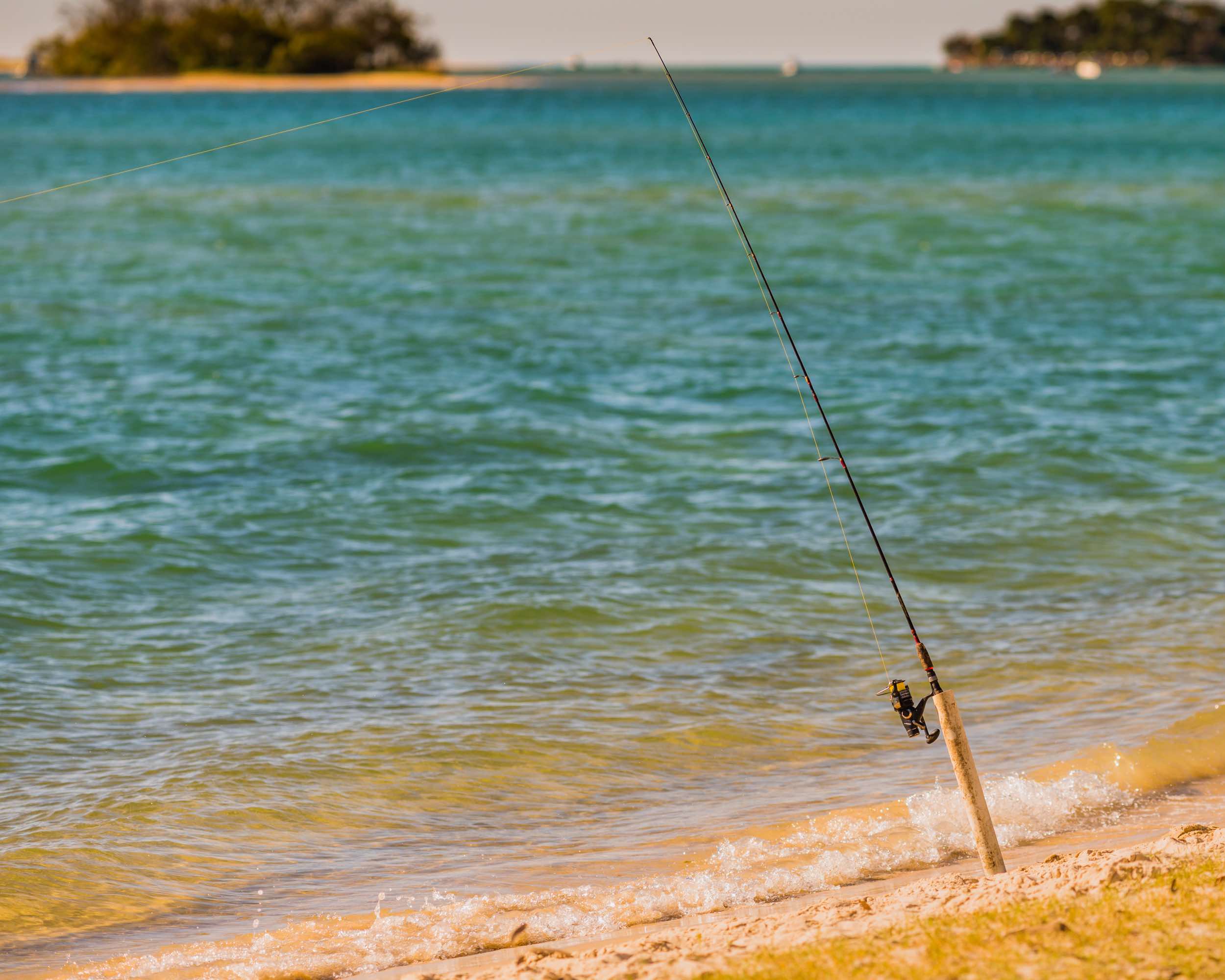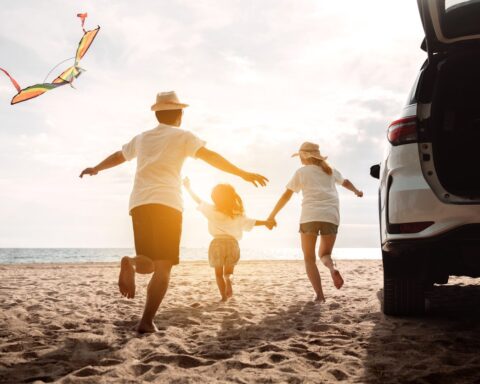Teewah Beach, is a 51 km stretch of sandy beach from Noosa North Shore to Doubles Island Point. The Cooloola section of the Great Sandy National Park, it is a camper and 4WD paradise. Its pristine sands and clear waters beckon outdoor enthusiasts from far and wide.
However, camping at Teewah Beach requires careful planning. From obtaining permits to respecting local wildlife, there’s a lot to consider.
In this guide, we’ll share essential Teewah Beach camping tips. These will help ensure a safe, enjoyable, and environmentally friendly camping experience.
Preparing for Your Teewah Beach Camping Trip
Preparation is key for a successful camping trip at Teewah Beach. It starts with obtaining a camping permit and understanding vehicle access rules.
Here’s a quick checklist to get you started:
- Obtain a camping permit
- Check vehicle access conditions
- Understand tide times
Obtaining a Camping Permit
You’ll need a camping permit before you set up camp at Teewah Beach. You can obtain this online from the Queensland Government’s website.
Remember, camping without a permit is not allowed. Respecting this rule to preserve the area for future visitors is essential.
Vehicle Access and Tide Times
Access to Teewah Beach is via 4WD vehicles. It’s crucial to check vehicle access conditions before your trip.
Also, be aware of tide times. High tides can make beach driving risky. Always plan your drive during low tide for a safe journey.
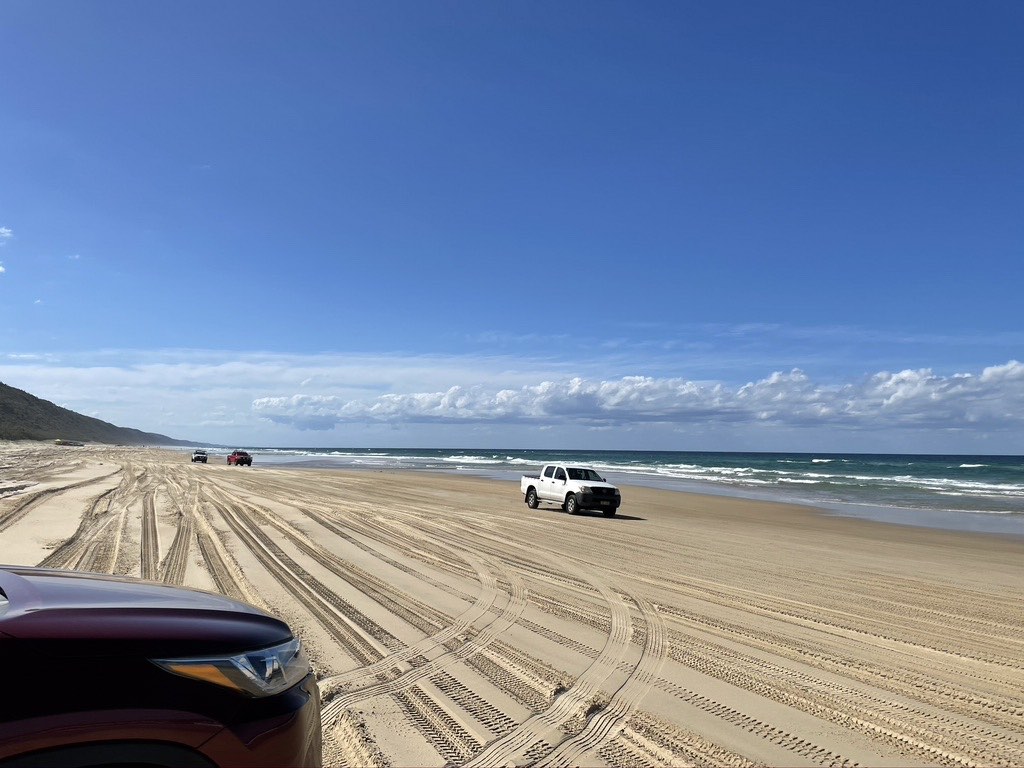
Getting to Noosa North Shore
To reach Noosa North Shore, you can take the car ferry from Tewantin at 399 Moorindil Street, Tewantin, QLD 4565. There is no requirement to make a reservation, simply arrive without prior booking. Occasionally, there may be a line, particularly on public holidays.
Setting Up Camp at Teewah Beach
Once you’ve reached Teewah Beach, it’s time to set up camp. Choose a spot in the designated camping areas. Avoid camping too close to the water’s edge.
Remember, Teewah Beach is a shared space. Respect other campers by maintaining a reasonable distance from their sites.
Choosing the Right Campsite
Choosing the right campsite is crucial. Look for a flat, shaded area away from the dunes. This will protect you from wind and sun.
Also, consider the tide line. Avoid setting up your camp too close to the water to prevent any surprises during high tide.
Teewah Beach Camping Grounds
Teewah Beach offers several distinct camping grounds for visitors to choose from, each with its own unique charm and amenities. Some of the well-known camping grounds at Teewah Beach include:
- Figtree Point Camping Area: Set among open forests with some wet, closed forest types, Figtree Point offers a serene camping experience surrounded by nature’s beauty.
- Freshwater (Tent Site) Camping Area: Providing shady, sheltered sites set amongst scribbly gum woodland, the Freshwater Tent Site is a perfect retreat for tent campers seeking a peaceful environment.
- Freshwater (Trailer Site) Camping Area: Like the tent site, the Freshwater Trailer Site offers shady and sheltered sites for campers with trailers, providing a comfortable camping experience.
- Harrys (River Access) Camping Area: This camping area is set among fringes of open forest and woodland, offering access to the river and a tranquil setting for campers to enjoy.
- Harrys (Vehicle Access) Camping Area: Similar to the river access area, Harrys Vehicle Access camping area provides a convenient location for campers with vehicles to set up camp and explore the surroundings.
- Neebs Waterhole Camping Area: Nestled among the fringes of nature, Neebs Waterhole camping area offers a peaceful retreat for campers looking to immerse themselves in the beauty of the surroundings.
- Poverty Point (Cooloola) Camping Area: Situated in a picturesque location, the Poverty Point camping area provides a unique camping experience with access to the Cooloola region’s natural wonders.
- Teewah Beach camping zone 1: Located at the northern end of Teewah Beach, this camping zone is 1.1km long and has open campsites.
- Teewah Beach camping zone 2: Located at the northern end of Teewah Beach, this camping zone is 2.4km long with open campsites.
- Teewah Beach camping zone 3: Located towards the northern end of Teewah Beach, this camping zone is 2.8km long with open campsites.
- Teewah Beach camping zone 4: Located midway along Teewah Beach, this camping zone is 1.75km long with open campsites behind.
- Teewah Beach camping zone 5: Located towards the southern end of Teewah Beach, this camping zone is 200m long with open campsites.
- Teewah Beach camping zone 6: Located at the southern end of Teewah Beach, this camping zone is 340m long with open campsites.
- Teewah Beach camping zone 7: Located at the southern end of Teewah Beach, this camping zone is 200m long with open camp sites.
These campgrounds offer a variety of camping options along the beautiful Teewah Beach.
Campfire Safety and Regulations
Campfires are permitted ONLY at Poverty Point. No campfires are to be ignited elsewhere in the recreational zone, including camping zones 1-7 at Teewah Beach.
The permanent ban on fire was implemented to minimize bushfire hazards, safeguard native wildlife’s vital habitat, improve visitor safety against injuries related to campfires, and lessen trash from non-flammable materials being burned.
If camping at Poverty Point – Never leave your fire unattended. Before leaving or going to sleep, ensure the fire is completely extinguished. This is crucial for your safety and the preservation of the environment.
Respecting the Environment and Wildlife
Teewah Beach is a natural paradise. It’s our responsibility to keep it that way. Always follow the principles of ‘Leave No Trace’ camping.
This includes proper waste disposal. Carry all your trash out with you when you leave.
Leave No Trace Principles
The ‘Leave No Trace’ principles are simple. Leave only footprints. Take only memories. This ensures the beach remains pristine for future visitors.
Remember, you’re a guest in this natural habitat. Respect the environment and its inhabitants.
Dingo Safety Guidelines
Dingoes are common at Teewah Beach. While they may look cute, they are wild animals. Maintain a safe distance and never feed them.
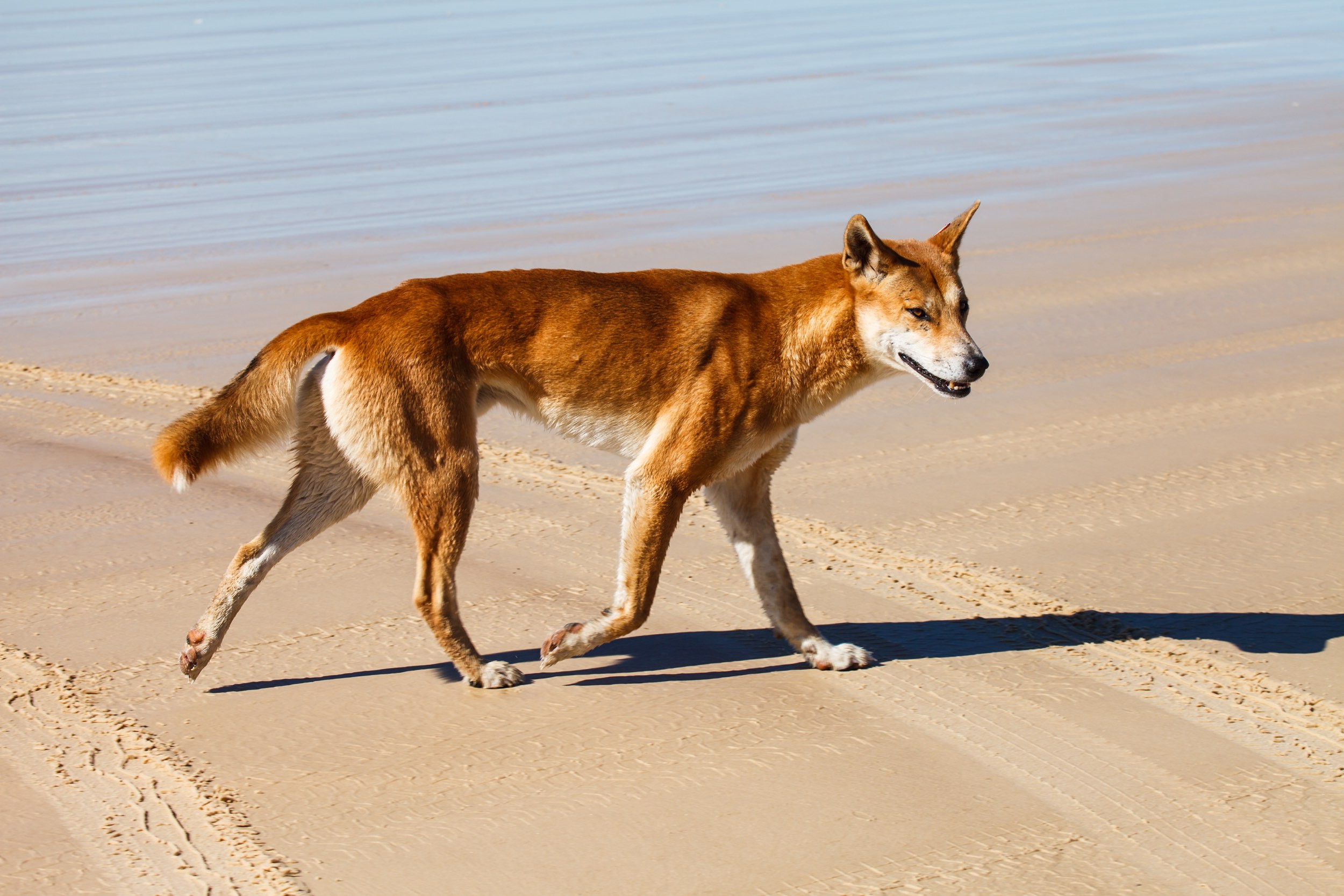
Feeding dingoes makes them reliant on humans for food. This can lead to aggressive behaviour. Always follow the dingo safety guidelines provided by the park authorities.
Turtle Nesting and Hatching Grounds
Teewah Beach is known for its stunning coastline and camping opportunities and its importance as a nesting ground for endangered marine turtles. The beach is a crucial habitat for these incredible creatures during their nesting and hatching seasons.
Between October and March, loggerhead and green turtles come ashore to lay their eggs in the dunes of Teewah Beach. The nesting process is a remarkable sight as these gentle giants dig their nests and carefully deposit their eggs before returning to the ocean.
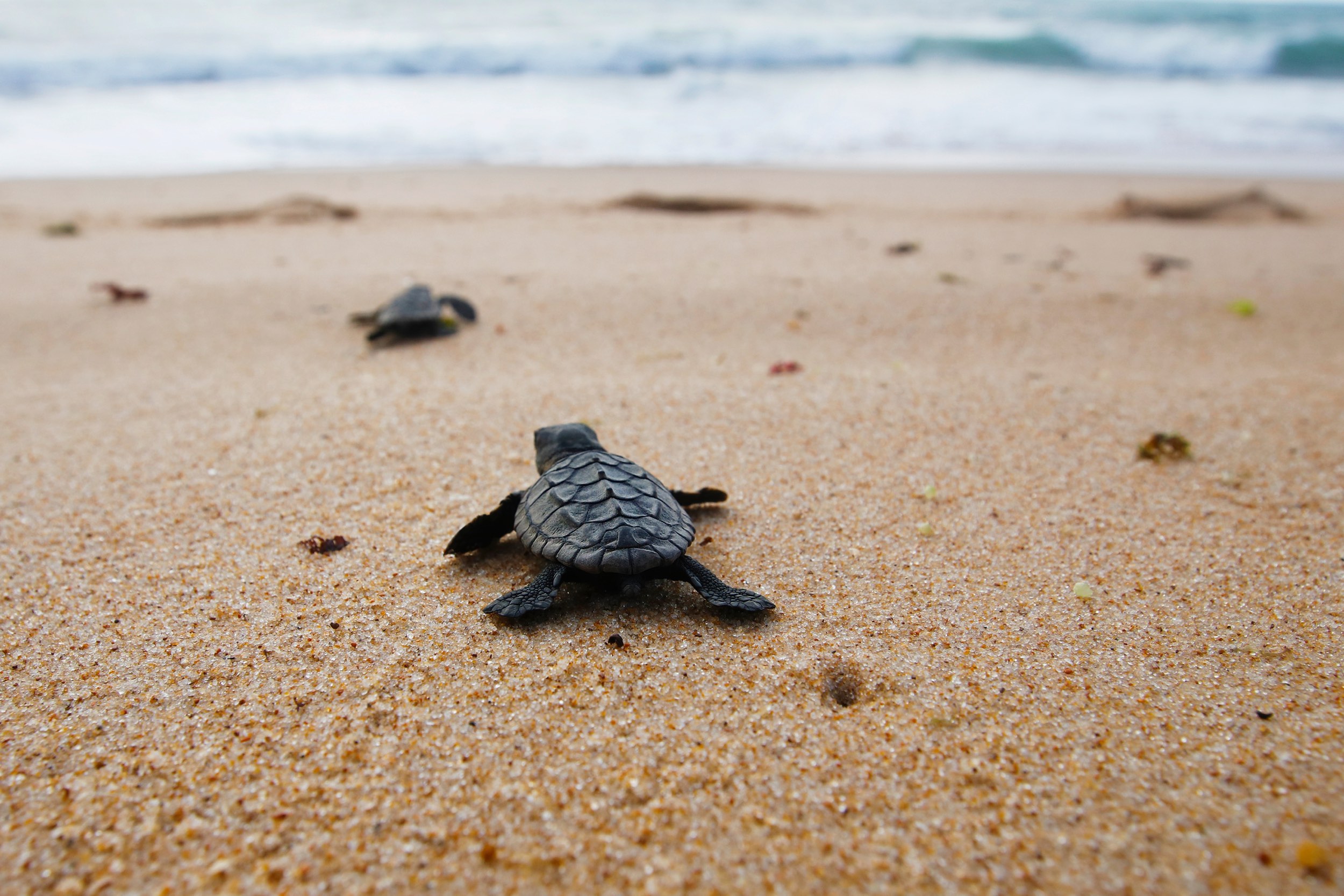
The hatching process begins after an incubation period of around 6 to 8 weeks. Tiny turtle hatchlings emerge from their nests and instinctively make their way towards the ocean, guided by the reflection of the moonlight on the water.
To protect the hatchlings and ensure their safe journey to the sea, visitors need to be respectful of the nesting and hatching areas. Observe any marked-off turtle nesting zones and avoid disturbing the nests or causing any disruption to the natural environment.
By respecting these nesting grounds and practising responsible beach behaviour, we can help contribute to the conservation efforts of these magnificent marine turtles. So if you’re lucky enough to witness a turtle hatching or encounter a nesting area, remember to appreciate these remarkable creatures from a distance and allow nature to take its course.
Essential Camping Gear for Teewah Beach
Camping at Teewah Beach requires some specific gear. This is due to its unique beach environment and local wildlife.
Here’s a basic checklist to get you started:
- Tent with sand pegs
- Sleeping bag suitable for the local climate
- Cooking equipment and utensils
- Food and water supplies
- First aid kit
- Insect repellent
- Sunscreen and hats
- 4WD recovery gear
- Tide chart and compass
- Dingo deterrents (e.g., secure food storage containers)
Remember, this is not an exhaustive list. Always tailor your gear to your personal needs and the specific conditions of your trip.
Enjoying Teewah Beach Responsibly
Teewah Beach is a place of natural beauty. It’s important to respect this environment during your visit. Always follow the guidelines provided and remember to leave no trace.
This means taking all your rubbish with you when you leave. It also means respecting the local wildlife and not disturbing their habitats.
Sustainable Fishing and Local Activities
Fishing is a popular activity at Teewah Beach. However, it’s important to follow local regulations. This helps to maintain the ecological balance of the area.
There are also many other activities to enjoy. These include 4WD driving, swimming, and exploring the local area. Always respect the environment and local culture while participating in these activities.
Read our article; Noosa North Shore to Double Island Point for the 4WD novice.

